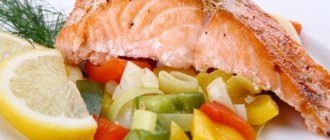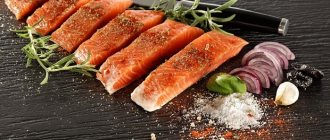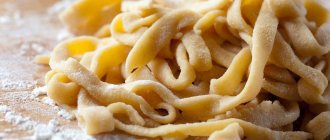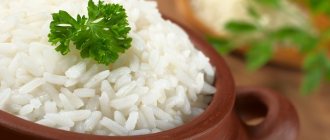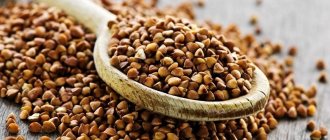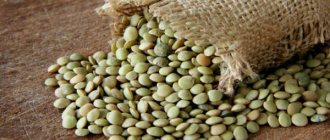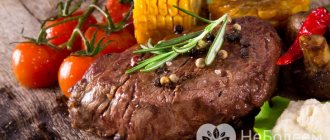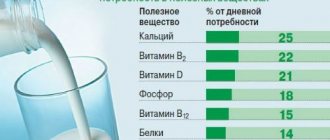Everyone probably has their own reasons to love Japanese cuisine. Exquisite chopsticks, unusual composition (nori, mamenori, tamago), novelty of recipes, natural ingredients - you can list their advantages for a long time. Sushi and rolls, traditional dishes of the Land of the Rising Sun, are especially loved all over the world. Healthy ingredients, beautiful design, wide range, affordable prices - how can you pass by a sushi bar or not place an order for home delivery?
However, anyone who is losing weight or trying to control their weight needs to know that the calorie content of rolls and sushi ranges from 50 to 330 kcal per 100 g of product, and one serving can weigh from 100 to 400 g. Therefore, there is a difference whether you take “ Boston" (100 kcal) or "Shanghai" (286 kcal). The first one will easily fit into your daily calorie intake, but for the sake of the second one you will have to give up a lot in your usual menu.
Compound
Cafes, bars and restaurants are required to indicate the ratio of BJU and calorie content of sushi and rolls in the menu. Moreover, both in printed form, which is served to visitors, and in an online version on the official website. This need is due to the fact that the composition of the same dish in different establishments can differ significantly. Accordingly, nutritional value will vary.
Unfortunately, not all establishments adhere to this rule. Sometimes even the staff cannot say exactly what the calorie content of a particular roll on their menu is. If you find yourself hostage to such a situation, it is enough to look at the composition of the dishes and, at least by eye, determine which of them are dietary and which can cause weight gain.
Low-calorie foods may contain:
- apple;
- seaweed "Chuka";
- “Masago” caviar orange, black;
- flying fish caviar, red, green;
- squid, shrimp, crab meat (natural), snow crab (imitation), mussels, octopus, scallop, uni;
- Chinese cabbage, Iceberg lettuce, cucumber, tomato, bell pepper and jalapeno, daikon;
- sesame seeds, dill, pickled ginger, asparagus;
- mamenori (soy paper), nori (pressed paper-like sheets of red seaweed);
- shiitake (mushrooms).
Much higher in calories are ingredients such as:
- avocado;
- bacon, smoked chicken;
- salmon, yellowtail, eel, tuna, mackerel, snapper;
- sauces “For baking”, “Spice”, “Unagi”, “Tempura”, “Barbecue”, “Mustard-honey”, mayonnaise;
- cream cheese, parmesan, mozzarella;
- tomago (Japanese omelette).
The main ingredient is rice. It will be useful to find out in advance from the establishment which one they use to prepare their dishes. The ideal option is brown. But this is rare, so most often you have to be content with ordinary white.
When cooking at home, do not forget to calculate what the final calorie content of the dish will be, taking into account the ingredients involved.
Choose your rolls wisely
Now that we know where to start the meal, let’s figure out how to choose the right sushi and rolls, let’s move on to the 6 “dos” and “don’ts” when ordering rolls:
Avoid fried rolls
The whole point of sushi is to enjoy the taste of fresh, unprocessed fish. Tempura (or hot rolls) is good for those who don't like or understand the taste of raw fish. But at the same time, this is far from the healthiest version of this dish.
Typically, fried rolls are dipped in very rich oil and then baked in a deep fryer.
Thus, a healthy dish turns into something akin to greasy fast food. Don't turn your rolls into donuts or French fries, and avoid the fried options.
For the sake of argument, let me mention that the popular fried shrimp roll contains about 508 calories and 21 grams of fat!
Don't get carried away with cream cheese
If you have the option of not adding cream cheese to your rolls, don't.
A Philadelphia roll (salmon and cream cheese), for example, contains about 320 calories, but these calories do not provide much benefit to the body.
If you like a creamy texture, choose the salmon and soft avocado option. The calorie count will remain almost the same (304 calories), but your body will receive the beneficial omega-3 fatty acids found in salmon and avocado.
Skip the toppings
Beautiful mayonnaise caps or elegant lines of sauce on top of a serving of rolls are another way to add extra calories and useless fat to your dish.
The Avocado roll was my favorite until I found out that the sauce it contains is nothing more than a mixture of sugar and soy sauce. Now I avoid this roll (which, by the way, contains about 372 calories) and advise you to.
Just as you avoid hidden sugars in salad dressings, try to avoid sauces in sushi and rolls.
This principle also applies to the hot spicy sauce that comes with many types of rolls. This sauce not only adds spice to the dish, but also brings you a completely unnecessary 110 calories per tablespoon.
Thus, a regular tuna roll contains 184 calories, and the same roll with a spicy mark (there will be small caps of spicy sauce on top of the roll) will cost you 290 calories.
I advise you to refuse sauce or mayonnaise as part of the rolls, and also choose proven and figure-safe soy sauce as an additional sauce.
Replace white rice with brown rice
The next step towards creating the perfect roll is replacing the usual white rice with brown rice.
Compared to white rice, brown rice has a more holistic structure, is rich in fiber, and is easier to digest by the body.
As a result of processing, white rice loses many useful substances, such as calcium and magnesium.
Simply replacing white rice with brown rice can "reduce your risk of type 2 diabetes," according to several studies.
It should also be noted that brown rice has a low glycemic index. This means that there will be no spike in insulin in the body, after which you will want to eat again or your mood will sharply worsen.
Most people don't notice a difference in taste if brown rice is used in the rolls.
Sashimi (raw fish without rice) is the best option
Another great idea is to replace a few servings of rolls in your order with servings of sashimi. Sashimi is thin slices of fresh fish (without rice).
Raw fish is low in calories and rich in protein. Thus, the feeling of fullness from such a meal will remain for a long time.
Tuna and salmon should be your favorite friends
Of all the variety of seafood, tuna and salmon are the best choices.
Both of these fish are rich in omega-3 fatty acids, which can boost your mood, reduce inflammation, and reduce your risk of heart disease.
Add vegetables to the roll
Vegetable roll is another healthy option for sushi night.
I like to pair a vegetable roll with a couple of pieces of sashimi for the perfect healthy meal.
Avoid fried vegetables (tempura). And, if possible, between fresh and pickled - choose pickled.
There is also nothing wrong with raw vegetables, except that the taste is not strong enough. I solve this problem simply - add ginger and wasabi.
Thin slices of avocado will add essential fats to your dish. The main thing is not to get carried away so that along with the taste and creamy texture, you don’t add too many extra calories to the dish.
Don't skip the ginger and wasabi
For most of us, ginger is a common garnish, and wasabi is a test of courage. Try giving these products a second chance.
Pickled ginger, served with sushi, promotes better digestion. It helps reduce nausea and intestinal upset. Additionally, it should be noted that ginger is a natural pain reliever.
And how much will these benefits cost you? Only 15 calories per tablespoon.
As for wasabi, it also has a number of beneficial properties:
- Reduces the risk of cancer and cardiovascular disease
- Prevents inflammatory processes
- Is an antibacterial agent
- Reduces symptoms of seasonal allergies
- Strengthens the immune system thanks to the antioxidants it contains
- Removes toxins from the body.
Recommendations
Despite the high calorie content of many traditional Japanese dishes, you can still avoid weight gain when eating them if you know some of the nuances.
The most high-calorie and fatty ones are baked, hot and sweet rolls. When losing weight, you definitely shouldn’t look at them.
The lowest calorie is sushi. The portions are light and will help you avoid overeating.
Don't get carried away with wasabi and soy sauce - they are quite high in calories. Also make sure that the composition includes as little other sauces and soft cheese as possible. Mayonnaise, fried bacon and smoked cinnamon are generally best avoided.
It is not recommended to drink sweet carbonated drinks like Cola and Pepsi. They are high in calories. Alcohol is also not a good option. It contributes to loss of control over your own appetite. There is always a risk of overeating.
15-20 minutes after eating, it is recommended to drink a cup of warm green tea. It will help digest heavy foods and prevent the storage of carbohydrates and fats in reserve.
Vegetables and seaweed
Just like good quality fish, you can’t find fault with vegetables. To prepare rolls, cucumbers are most often used, which have virtually no calories, and avocados are a source of fatty acids, vitamins, potassium, copper, iron and many other minerals. It turns out that vegetables are completely beneficial and no harm to your figure. Dried nori seaweed also does not pose any danger: it contains a lot of iodine, iron, and fiber.
What to eat without harming your figure? 10 most delicious low-calorie dishes
Calorie calculation
In the menu, the calorie content of rolls and sushi can be indicated in two options:
- per 100 grams of finished product;
- for the entire portion (1 sushi, 6 or 8 rolls).
If the calorie content of a serving is indicated, it is much more convenient. If it’s 100 g, you’ll have to calculate how much the whole dish will cost your figure. Approximate indicators:
- weight 1 pc. sushi - 15–25 g;
- weight 1 pc. roll - 20–50 g (usually a serving consists of 6-8 pieces).
Calculation examples:
In the classic “Philadelphia” - 197 kcal per 100 g. For 8 pieces per serving there are 263 g - 518.11 kcal.
In spice rolls with tuna - 157 kcal per 100 g. For 6 pcs. per serving there are 117 g - 183.69 kcal.
To calculate the calorie content of homemade Japanese delicacies, it is more convenient to use an online calculator.
What are the advantages of Japanese cuisine
- The Japanese philosophy involves maximum trust in nature and immersion in it. Therefore, sushi is usually created based on natural products.
- A harmonious combination of ingredients is an important aspect of the exoticism and sophistication of a dish.
- Seasonings allow you to experience the unusual taste and enjoy the peculiarities of Japanese dishes.
- The original design attracts attention, Japanese food looks very aesthetically pleasing and arouses interest and a desire to try amazing dishes.
The energy value of sushi is so low that you can spend a fasting day on this dish.
How to make sushi at home?
The preparation is simple:
- Boil rice - 500 gr.
- Mix with salt, sugar and vinegar to taste.
- Slice the cucumbers lengthwise, 3 cm wide.
- Cover a sheet of film measuring 20x20 cm with rice. The layer should be 3-5 mm thick.
- Place the cucumbers in the center in the form of a line so that they divide the square into 2 parts.
- Wrap in a roll, cut into pieces and remove the film.
- Place a piece of raw fish on top.
You can experiment with varieties of fish, types of herbs and spices. Cooking yourself will save money and delight your loved ones.
Are rolls harmful?
The question of the dangers of this already familiar dish is controversial. Seaweed, fish, seafood, hot spices in moderate quantities are extremely beneficial for the body (especially women) - they are rich in vital microelements. Another thing is the quality of these products, which applies not only to sushi. Any dish prepared from stale, unnatural ingredients can have a strong negative impact on health. Are rolls harmful? If you use high-quality raw materials in the cooking process and know when to eat them in moderation, they will not cause harm to either the stomach or the body as a whole.
Calorie content of rolls and sushi per 100 grams: table
Calorie content of sushi in the amount of 1 piece. shown in the table:
| Name | Number of kcal in 1 piece | Squirrels | Fats | Carbohydrates |
| Indiana | 318 | 13 g | 7 g | 55 g |
| The Dragon | 226 | 7 g | 12 g | 22 g |
| Wasabi | 160 | 5 g | 4 g | 24 g |
| California | 154 | 6 g | 5 g | 20 g |
| Chicken in Cream | 127 | 7 g | 5.4 g | 12.6 g |
| Chuka | 123 | 1.4 g | 8.1 g | 11.1 g |
| Hit | 105 | 6 g | 3.8 g | 14 g |
Low-calorie types:
| Name | Amount of Kcal. in 1 piece | Squirrels | Fats | Carbohydrates |
| Tom Yum | 96 | 6.2 g | 5.5 g | 4.7 g |
| Ramen | 76 | 3.6 g | 4.1 g | 7.1 g |
| Black currant | 38 | 0 g | 0 g | 8.9 g |
| With pickled ginger | 17 | 0.4 g | 0.4 g | 3.4 g |
| With soy sauce | 16 | 2 g | 0 g | 2 g |
Rolls have an average of 60 kcal.
Diet lovers will be able to regulate the number of calories eaten based on this table. At first glance, this food is low in calories and filling, but don’t overdo it.
PP sushi recipe
Another delicious and healthy recipe for sushi that you can safely eat even for dinner. For this recipe we will make a healthy paste with avocado, which will serve as an excellent filling for sushi.
So, to prepare a special paste you will need the following ingredients:
- avocado + 100 grams of low-fat cottage cheese + black pepper + salt + herbs.
Place all ingredients in a blender and beat until smooth. Now we won't need to use rice for our sushi.
Of the remaining ingredients we will need:
- nori leaves
- boiled shrimp
- cucumber.
Spread avocado paste onto a sheet of nori and place boiled shrimp and cucumber on top. Wrap it up and get a very healthy and tasty dish!
Advantages and disadvantages
| Advantages | Flaws |
|
|
Diet price
You can calculate the price of the sushi diet in advance. To do this, study the menu in the nearest cafe or delivery service and select 3-4 rolls (18 pieces) for each day. If you choose dietary options, then a day of diet will cost no more than 350-400 rubles.
If you take sushi ingredients separately, it will cost a little more, because you will need to purchase a special mat, a set of dishes, take whole packages of rice, ginger, wassabi and other important little things. For example, a standard beginner’s set will cost you about 950 rubles, but there may be a lot of unnecessary stuff there, and there may not be avocados and other extremely necessary dietary products.
Rolls with proper nutrition
Many ladies on the path to lightness and a slim figure practice proper nutrition. I wonder if it’s possible to eat rolls on such a diet? If they are dietary, made from rice, cucumber and lean fish, then why not? The main thing is not to eat sushi for dinner, but to include it in breakfast or lunch, making it more tasty and interesting. Low-calorie rolls with proper nutrition will also help you lose weight, and some will even make you squeal with pleasure thanks to such Japanese variety in your usual diet.
